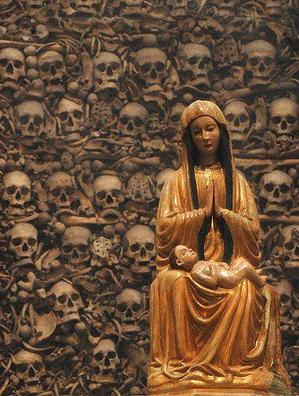 Salvio Huix i Miralpeix was born on December 22, 1877 in Santa Margarida de Vellors in the Diocese of Vic in Catalonia. He was ordained a secular priest in 1903, and four years later entered the Congregation of the Oratory of Vic, the spiritual sons of Saint Philip Neri. At the Vic Oratory he lived for twenty years the Oratorian life of prayer, teaching the Catholic faith and administering the sacraments. He was the Provost of the Vic Oratory when, in 1927, he was nominated bishop of Ibiza; in 1935 he was transferred to the Diocese of Lérida where he was known for his effective apostolic work.
Salvio Huix i Miralpeix was born on December 22, 1877 in Santa Margarida de Vellors in the Diocese of Vic in Catalonia. He was ordained a secular priest in 1903, and four years later entered the Congregation of the Oratory of Vic, the spiritual sons of Saint Philip Neri. At the Vic Oratory he lived for twenty years the Oratorian life of prayer, teaching the Catholic faith and administering the sacraments. He was the Provost of the Vic Oratory when, in 1927, he was nominated bishop of Ibiza; in 1935 he was transferred to the Diocese of Lérida where he was known for his effective apostolic work.
On July 21, 1936, Republican forces broke into the Episcopal palace and Bishop Miralpeix, reluctantly and in order to safeguard his associates, took refuge with friends. Seeing the dangers to which his helpers were exposed, on the night of July 23, he left his hideout and presented himself to the police, revealing his true identity. He was imprisoned at once, together with other prisoners with whom he shared both sufferings and also the joy of secret prayers and Masses, right up to the last moving Holy Communion which proved to be their Viaticum.
At 4:30 am onAugust 5, the prisoners were all of them taken to the local cemetery and shot. The bishop asked that he might be the last to be killed, so as to give absolution and comfort to his companions in martyrdom. Before his arrest, he entrusted his pectoral cross to a friend, asking him to take it to the Holy Father in Rome, for whom he was offering his life and to assure him of his loyalty.
It is said that prior to his arrest he gave his pectoral cross with a friend, asking him to take it to Pope Pius XI, with the message that if it were asked of him, he freely offered his life for the Pope, and to assure him of his complete fidelity to Jesus Christ and the Catholic Church.
Following closely the Oratorian charism, Blessed Salvio Huix-Miralpeix brought the light, warmth and joy of God’s love, which he had found in Saint Philip, into the darkness of chaos and hate. A terrific witness indeed. The initial phases for cause for canonization for Huix-Miralpeix happened between 1947 and 1950 and on July 27, 2011 Pope Benedict signed the decree determining that he was was a Martyr for the Faith.
The beatification of Bishop Miralpeix (1877-1936), the first Oratorian martyr, along with 521 others, took place in Tarragona, Spain, on Sunday, October 13, 2013. The Oratorian beatus Bishop Miralpeix is added to a growing list of Oratorians who lived the gospel with humanity, intensity and holiness. They show us that conversion is possible.
So far, 1523 souls have been raised to the altar and beatified, 11 have already been named saints.
The text is redacted from what was published by the Oxford Oratorians.
 Yesterday, 7 November 2018, Pope Francis received in audience Cardinal Angelo Becciu, Prefect of the Congregation for the Causes of Saints, where it was decided that James Alfred Miller was a martyr for the faith.
Yesterday, 7 November 2018, Pope Francis received in audience Cardinal Angelo Becciu, Prefect of the Congregation for the Causes of Saints, where it was decided that James Alfred Miller was a martyr for the faith.









